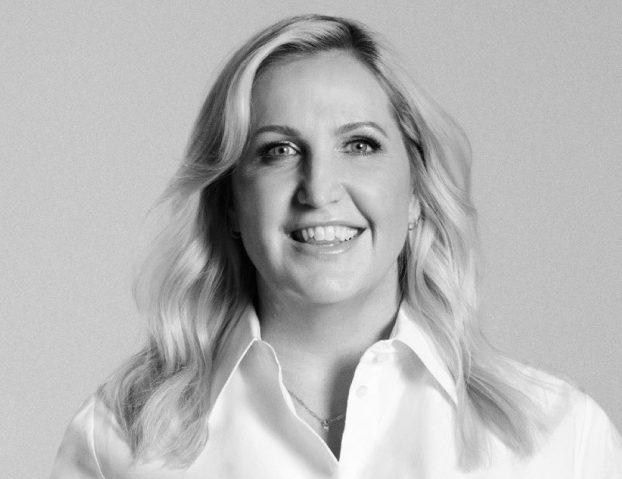From developing savvy umbrella branding to creating a lightning rod CSR-centric product, brands are pulling focus closer than ever these days. Similar to past sponsorship consolidation cycles, CSR has evolved from bandwagon-leaping to the use of a more refined approach – one that hammers home a brand’s corporate identity while doing good in the community, creating products and programs that lead change rather than follow.
In March, Shoppers Drug Mart announced a new platform that would bring all of its CSR efforts together under a single thematic umbrella for the first time in the retailer’s history. The new Women initiative – a commitment of more than $40 million over five years – is focused on improving the health of women in mind, body and spirit.
“Historically we’ve made very broad and very diverse investments across hundreds of charities so it diffused the effort,” says Sandra Sanderson, SVP, marketing, Shoppers Drug Mart. “We felt we needed to have more focus and more impact.”
The Women platform includes the Tree of Life program, which solicits donations for local women’s health charities at the store level; the Shoppers Drug Mart Weekend to End Women’s Cancers, a 60 km walk for cancer research in cities across Canada; and sponsorship of toll-free new-mom hotline Motherisk, online community FacingCancer.ca and mental health site WomensHealthMatters.ca.
“For us, it’s important to support what our organization really cares about: health,” Sanderson says, adding that 80% of Shoppers Drug Mart customers are female, and the majority of employees are as well. “Women tend to look after everybody else before they look after themselves. We believe that it’s important for her to be taken care of, because when she’s healthy and well, we all are.”
The new CSR platform was unveiled alongside a national survey of more than 1,100 Canadian women, which found that women at all life stages ranked personal health and the health of their families as their most important life priorities. It also found that 68% believe women’s health is underfunded in Canada and only 38% feel they’re surrounded by a network of people who prioritize their own health.
While these stats are bad news for women, they reveal a potentially ownable chunk of CSR turf for Shoppers. As Sanderson notes, “We would really like to be recognized as one of Canada’s leading supporters of women’s health.”
After test-marketing the platform with its employee base, Shoppers launched Women with a national newspaper campaign featuring creative by Manifest, PR by National and the media buy handled internally.
The April 2011 issue of Glow magazine, which Shoppers Optimum members receive in the mail, was also focused on women’s health, with three pages dedicated to the Women initiative. For the first time, a free digital version of the magazine was made available on the retailer’s website. Awareness was also raised via Facebook (where the brand has almost 21,500 likes), Twitter (3,770 followers) and direct email to consumers.
At the store level, staff have been briefed about the platform and are wearing buttons, with pamphlets available at the register.
“In-store is key,” Sanderson says. “There’s been a significant employee engagement effort…Their pride is critical to our success.”
As Lisa Gibson, director, communication and corporate affairs, Shoppers Drug Mart, points out, employee engagement has always been a big part of the retailer’s CSR contributions. “It’s not just about a financial donation, which is obviously really important. It’s also a lot of our employees rallying to attend the walks or volunteer their time to help out,” she says.
The Tree of Life program – in which customers can purchase a paper leaf, butterfly or cardinal that is displayed in-store – also allows each store’s associate-owner to decide which local women’s health charity will benefit from donations. (In the past, any health-related charity was eligible for the program.)
“We want the stores to have empowerment, and a sense of accountability,” Gibson says. Since 2002, Tree of Life has raised over $14.7 million, with 373 local women’s health organizations supported in 2010. This program also allows Shoppers to continue to support diverse charities while reframing the focus and resources into the more impactful umbrella program.
When it comes to the strategy behind the new platform, “having that emotional connection to the customer is important,” Sanderson says. “She loves us as a store. This allows us to create a deeper connection. It also allows her to feel more connected to other women.”
As Sanderson notes, “We have been committed to community investment and CSR for years, however this is the first time we’ve approached it as an integrated strategy.” 
Campbell Canada, on the other hand, is no newbie when it comes to focused CSR. Since 2004, Campbell’s has been committed to “Extraordinary, Authentic Nourishment for All,” a platform broken down into three planks: help alleviate hunger (including work with food banks), assist Canadians in choosing and preparing better meals (through recipe development and distribution) and strive for positive nutrition (as seen in the brand’s sodium reduction program).
“Because of who we are and what we make, we felt that we should take a lead role in helping to alleviate hunger,” says Mark Childs, VP marketing, Campbell Canada.
For more than a decade, Campbell’s has been working with Food Banks Canada, and every year the company donates over a million pounds of food. Last year, it cemented the relationship with a multiple-year partnership that sees the brand donating funding and human resources as well as supplies.
But perhaps the most tangible example of Campbell’s work to alleviate hunger is a new product called Nourish. Billed as the first complete meal in a can, Nourish has a pop-top lid and a 24-month shelf life, can be eaten at room temperature and doesn’t require the addition of water – making it suitable for both food banks and disaster-relief situations where clean water might not be available. Offered in a vegetarian and meat variety, it’s the first consumer product to be made using a new, protein-rich grain called naked oats, developed by Agriculture and Agri-Food Canada scientists and grown in Manitoba.
The idea for Nourish was first developed after Campbell Canada employees participated in a global think tank on food security held at McGill University in November 2009. Although they were there to talk about the company’s work in sodium reduction, they came away with the belief that they could do more.
“When we started working on Nourish, it was literally employees who stepped forward and said, ‘I’d like to do this over and above my existing role,’” Childs says.
The product was launched in March with a donation of 100,000 cans to Food Banks Canada, with suppliers including Keystone Foods, McCormick Canada, Pulse Canada, Norampac and Silgan Containers donating ingredients and packaging supplies for this initial run.
“We haven’t taken the traditional CPG route,” Childs says. “For us, the product is an embodiment of our commitment to hunger and this particular cause in CSR. We felt that as an organization that is obviously bottom line profit-oriented, we can’t be successful in alleviating hunger if we do it alone.”
Campbell’s placed ads in the Globe and Mail and launched a social media campaign, announcing that if Canadians joined the conversation about hunger on Facebook and Twitter, it would donate up to 100,000 more cans. Users could have a can donated on their behalf by “liking” or sharing the Facebook page, posting a comment, tweeting with the hashtag #Nourish or watching a two-minute video called “The Story of Nourish.” The creative was done by BBDO in Toronto and Soulsight in Chicago. OMD handled media, Crucial Pictures made the video and Weber Shandwick worked on PR, social media and creative copy (all in Toronto).
Five weeks into the campaign (which wraps up on Hunger Awareness Day, May 31), 85,000 additional cans had already been donated, and 7,000 “likes” had been added to the brand’s Facebook page. About 1,700 posts had been made, 90% of which were positive, with comments like “Nice to see a company who gives back to the communities that support them” and “Thanks Campbell’s for doing your part.” The video had been viewed almost 18,000 times, with 95% of viewers watching it from start to finish.
“[Although] the purchased media was only two Globe and Mail ads, we’ve garnered over 15 million impressions in media,” says Childs. “It’s definitely sparked the passion.”
Childs says this is a conversation people aren’t used to having. “Just shy of a million Canadians every month are using the food bank but I don’t know that many Canadians would know that,” he says. “It’s almost a 30% increase in the last two years. We wanted to spark the conversation because at the end of the day we can only help alleviate hunger if Canadians want to be involved.”
Social media seemed like a natural way to engage the public, Childs says, adding that his team was inspired by the way SunChips has leveraged social media.
Although Nourish was specially designed to be useful for food banks, it’s also launching in supermarkets this month, where Canadians can purchase it for their own use or to donate. For each can purchased, 25 cents will be donated to the United Nations World Food Programme and the net profits will go toward creating more Nourish for those in need.
Childs says the public response to Nourish so far has been encouraging.
“As a 20-plus-year marketing experience guy, I haven’t seen anything spark this way in a long time,” he says. “I think it’s because it’s authentic. As a food company we do have this lead role to play.”
In addition to doing good, he says the CSR program allows Canadians to rediscover the 80-year-old brand and see how it’s grown.
“Our hope is that our journey in sodium reduction over the last seven or eight years has piqued Canadians’ interest,” he says. “We’re a company that wants to be relevant today and wants to be Canadians’ partner and advocate for healthy living.”
For Campbell Canada, the focus on alleviating hunger isn’t just a charitable platform – it’s a fully integrated plan that’s woven through everything the company does – and Childs says that kind of focus is invaluable.
“From a business strategy and employee engagement point of view, but also [in terms of] the impact one can make, I think focus is a good thing. I don’t think you would’ve seen the innovation and fresh ideas we brought to the table had we not been focused,” he says. “It helped us break through.”























